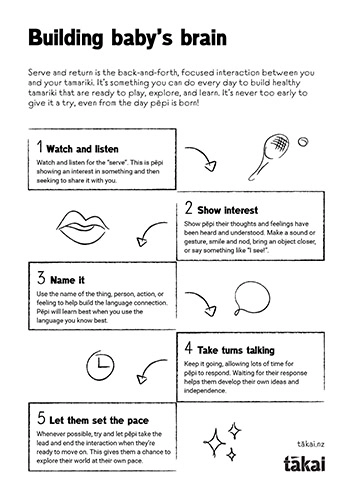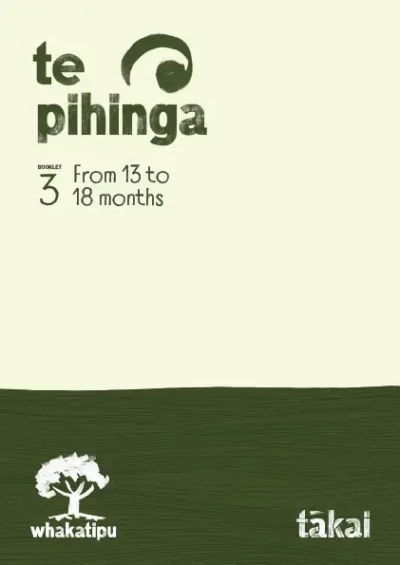
First words
How babies communicate in the run up to learning how to talk, and what you can do to encourage their first words.
Babies learn how to communicate from birth. The first 3 years, when their brain is undergoing so much growth and development, is a very intensive period for learning speech and language skills.
Babies learn language best when they hear it from the people who care for them.
Even before birth, babies learn from the sounds they’re hearing. Their parents’ voices will be familiar to them after birth, and they begin to watch mum and dad’s facial expressions to help them learn.
Crying
Babies first communicate by crying. They have different cries to signal different needs. They soon learn that their cries can bring them what they need, like a cuddle or food.
Cooing
Within the first few months, babies begin to make ‘cooing’ and pleasure sounds. They smile when they see mum, dad and other familiar faces, and try to copy the facial expressions they see.
Repeating back to baby
Babies feel good about themselves when mum and dad repeat their sounds back to them. This encourages them to keep making the sounds and to try out new ones.
Babbling – 4 to 6 months old
From about 4 to 6 months old, babies begin to babble, and make ‘ooh’ and ‘aah’ sounds. Then they add on a consonant and make sounds beginning with ‘p’, ‘b’ and ‘m’. Then they begin to say ‘ma’ and ‘da’.
Parents can repeat these sounds back to them, using them in context – ‘Yes, Mama’s right here, baby.’ Parents will often speak to their baby in ‘parentese’, the high-pitched singsong language that’s easier for babies’ brains to process.
Baby will also be laughing, gurgling and making squealing sounds of delight.
The beginning of conversing is when baby responds to someone talking to them.
Babbling – 7 to 12 months
From about 7 months to 1 year, babies babble using long and short groups of sounds. They may sound as if they’re saying a sentence.
They also use gestures to communicate what they want — holding out their arms to be lifted up, or pointing to something they want.
Most babies will understand some words for things that they hear often – ‘bottle’, ‘cup’, or ‘bye’.
They can also respond to simple requests and imitate speech sounds, and they’ll often say their first word. They may not have the word quite right, but parents will know that ‘tat’ means ‘cat’.
Joint attention in the first year
In the second half of their first year, most babies develop ‘joint attention’ — they can direct their parents’ (or another’s) attention to a toy, object or themselves, by gazing and gesturing. They can also follow their parent’s gaze and gestures to look at what their parent is looking at.
Children who frequently engage in joint attention are likely to have more language by 2 years old than those who don’t.
1 to 2 years old
In the second year, toddlers use new words on a regular basis and begin to put 2 words together. They’ll still understand (receptive language) a lot more than they can say (expressive language).
Parents can:
- name things that their toddler is interested in
- repeat their sounds and rephrase what they’re saying in a grammatically correct way
- use parallel talk sometimes – this is when they describe what their toddler is doing, a bit like a sports commentator.
Individual differences and getting a good start
Children learn language through positive, everyday interactions with the people they’re close to, and it’s important to remember that all children learn at their own pace.
However, children whose parents talk, read and sing to them often are likely to have more vocabulary and stronger language and communication skills.
Helpful resources for whānau
-

Early language resources
Talking Matters
A range of downloadable resources to support responsive interactions and early language learning.
-
Serve and return<
Serve and returnThis video outlines the serve and return process that helps to lay a strong foundation for the brain development of your tamariki.













